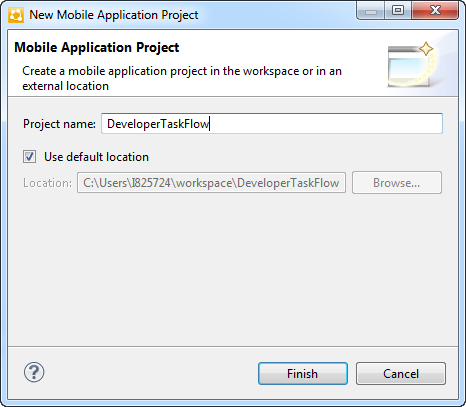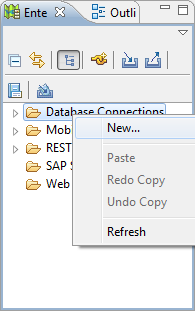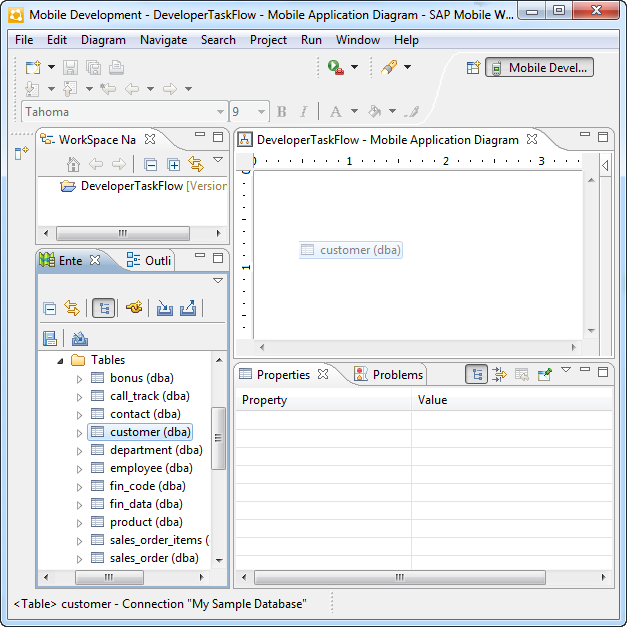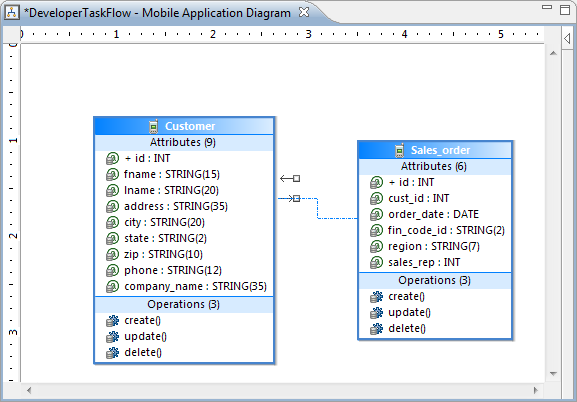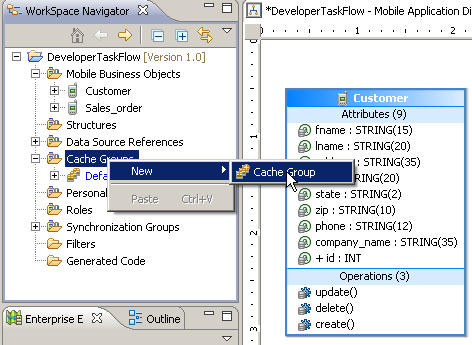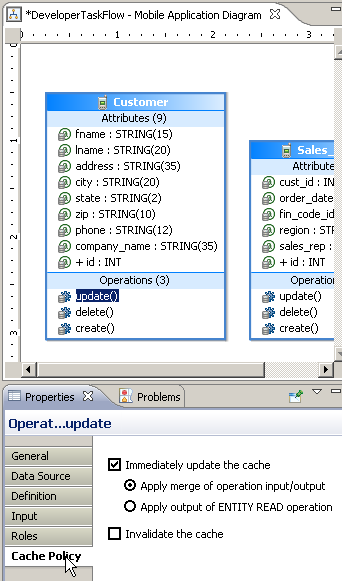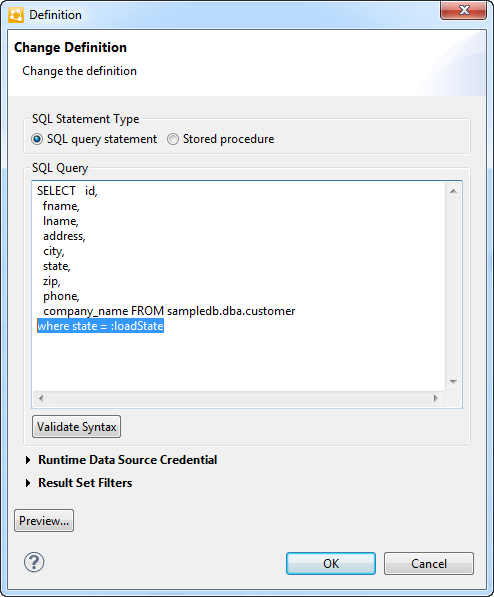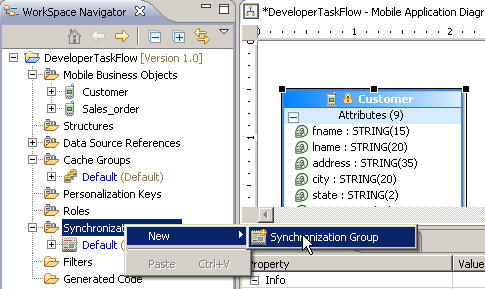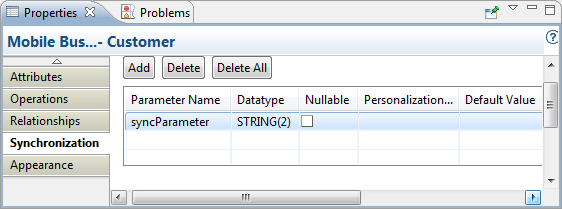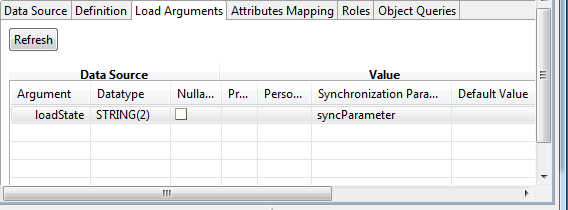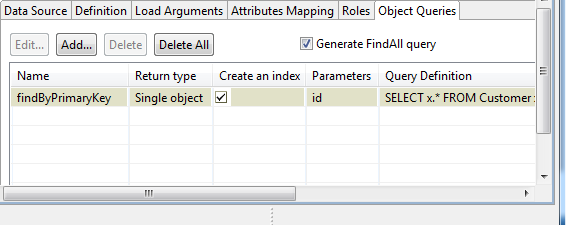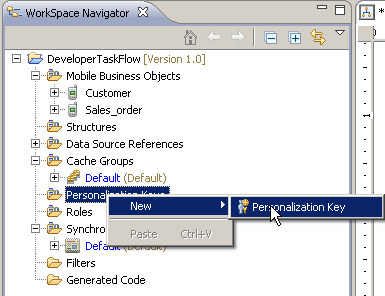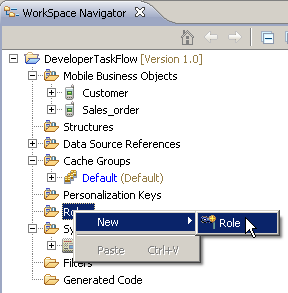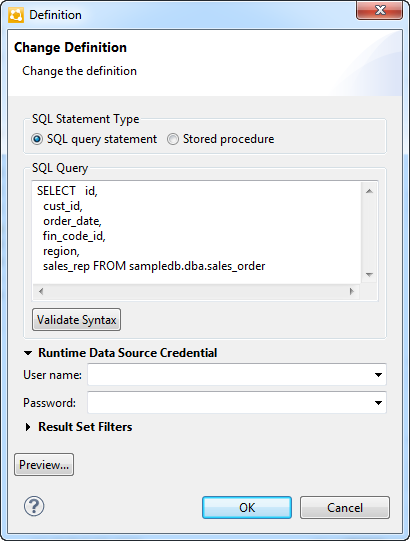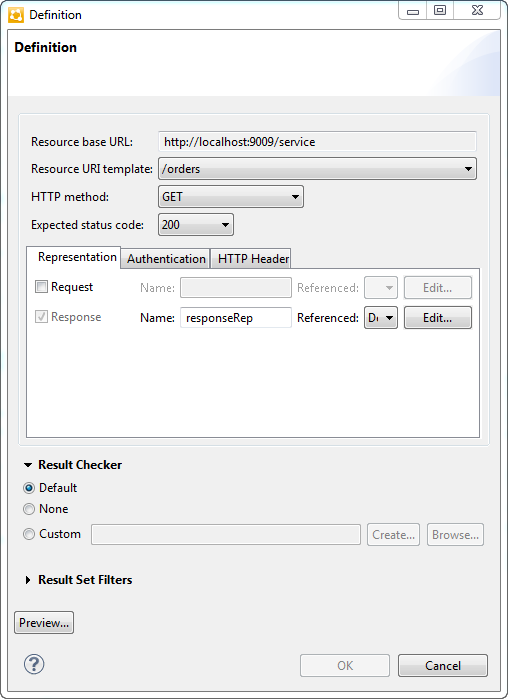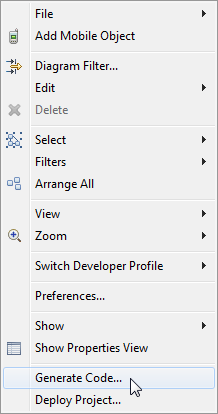This task flow guides the MBO developer through the decision-making process and steps required to develop mobile business objects in Sybase Unwired WorkSpace, which provide the server-side code in mobile applications, including Hybrid Apps.
This task flow does not include all configurable options, but does guide the MBO developer through the commonly performed tasks required to develop a mobile data model.
- Determine the data needs of the mobile application. For design information, see Best Practices for Developing an MBO Data Model.
- Create and open the Mobile Application Project, which contains all project-related
information.
See Creating a Mobile Application Project in Sybase Unwired WorkSpace - Mobile Business Object Development.
- Create and connect to the enterprise information system (EIS) datasource using a
connection profile from which you develop the MBOs.
- For design information, see Best Practices for Loading Data From the EIS to the CDB.
- See Creating a Data Source Connection Profile in Sybase Unwired WorkSpace - Mobile Business Object Development.
- Create the MBOs. The simplest method is to drag and drop the datasource (for
example, a database table) onto the mobile application diagram and bind the MBO to
the datasource.
For design information, see:- Define the attributes – see MBO Attributes
- Define the operations – see Mobile Business Object Operation Properties, and related topics
- Define other datasource and runtime specific properties during MBO creation, or later from the Properties view – see Mobile Business Object Properties
See these topics in Sybase Unwired WorkSpace - Mobile Business Object Development:- Creating Mobile Business Objects
- Binding Mobile Business Objects to Data Sources
- Creating Attributes for a Mobile Business Object
- Creating Operations for a Mobile Business Object
- Mobile Business Object Operation Properties
- Define Relationships between MBOs. Most mobile applications include
several to many individual MBOs.
- For design information, see MBO Relationships
- See Creating Relationships Between Mobile Business Objects in Sybase Unwired WorkSpace - Mobile Business Object Development
- Define cache refresh behavior.For design information, see:
- Cache Groups and Data Change Notification.
- Operation Cache Policies.
- Load Arguments.
See these topics in Sybase Unwired WorkSpace - Mobile Business Object Development:- Creating Cache Groups:
- Setting an Operation Cache Policy:
- Load Arguments:
- Define synchronization behavior.For design information, see:
- Synchronization Groups and MBO Synchronization Groups
- Synchronization Parameter Definition Guidelines and MBO Synchronization Parameters
- Understanding Synchronization Parameters
See these topics in Sybase Unwired WorkSpace - Mobile Business Object Development:- Creating Synchronization Groups:
- Defining Synchronization Properties for Individual Mobile Business
Objects:
- Combining Load Arguments and Synchronization Parameters:
- Consider additional MBO configuration options when defining the mobile data
model.
- Use object queries to filter and display data already downloaded to the device:
- For design information, see Object Queries.
- See Generating Object Queries from Primary Key Attributes in Sybase Unwired WorkSpace - Mobile Business Object Development.
- Use personalization keys to personalize certain input field values within the
mobile application.
See Managing Personalization Keys in Sybase Unwired WorkSpace - Mobile Business Object Development.
- Use logical roles to provide authorization to MBOs and MBO operations.
See Managing Roles and Permissions in Sybase Unwired WorkSpace - Mobile Business Object Development.
- Set runtime datasource credentials, which is required for establishing EIS
connections on the client's behalf, such as in single sign-on (SSO)
configurations.
See these topics in Sybase Unwired WorkSpace - Mobile Business Object Development:
- Implementing SSO for SAP.
- Propagating a Client's Credentials to the Back-end Data Source.
- Use result set filters to add custom logic to manipulate rows and columns of
data returned to the Unwired Server cache.
- For design information, see Result Set Filters.
- See Adding a Result Set Filter in Sybase Unwired WorkSpace - Mobile Business Object Development.
- Use result checkers to customize error checking for mobile business object
(MBO) operations.
- For design information, see Result Checkers.
- See Adding a Result Checker in Sybase Unwired WorkSpace - Mobile Business Object Development.
- For more information about datatype usage in mobile applications, see Datatype Support.
- For more information about, and to learn about planning for MBO and mobile application life cycles, see Development Life Cycle in Fundamentals.
- Use object queries to filter and display data already downloaded to the device:
- Generate the Object API code and deploy the MBOs.
- Generate the object API code for the mobile platform on which you are
developing the application.
See Generating Object API Code in Sybase Unwired WorkSpace - Mobile Business Object Development.
- When you are ready to test a mobile application, deploy the MBOs to
Unwired Server.
See Packaging and Deploying Mobile Business Objects in Sybase Unwired WorkSpace - Mobile Business Object Development.
- Generate the object API code for the mobile platform on which you are
developing the application.
